Your vehicle has a tire sealant and compressor kit that is capable of temporarily sealing a puncture up to 6 mm in the tread of the tire. There is no jack or spare tire. The kit inflates the tire with liquid sealant and air. The tire sealant and compressor kit can also be used to inflate an underinflated tire. After the tire is inflated to the recommended inflation pressure, see Inflation - Tire Pressure , the vehicle must be driven for five miles to distribute the sealant in the tire and seal the puncture. After driving five miles, the tire pressure must be rechecked and adjusted as needed. See "Using the Tire Sealant and Compressor Kit to Temporarily Seal and Inflate a Punctured Tire" later in this section.
After temporarily using the tire sealant and compressor kit, take your vehicle to an authorized dealer/retailer as soon as possible. If the sealant is removed from the tire within 100 miles (161 kilometers) of driving, then it is easier to clean from the tire and you are less likely to require a replacement tire.
Be sure to read and follow all of the tire sealant and compressor kit instructions. The kit includes the following:
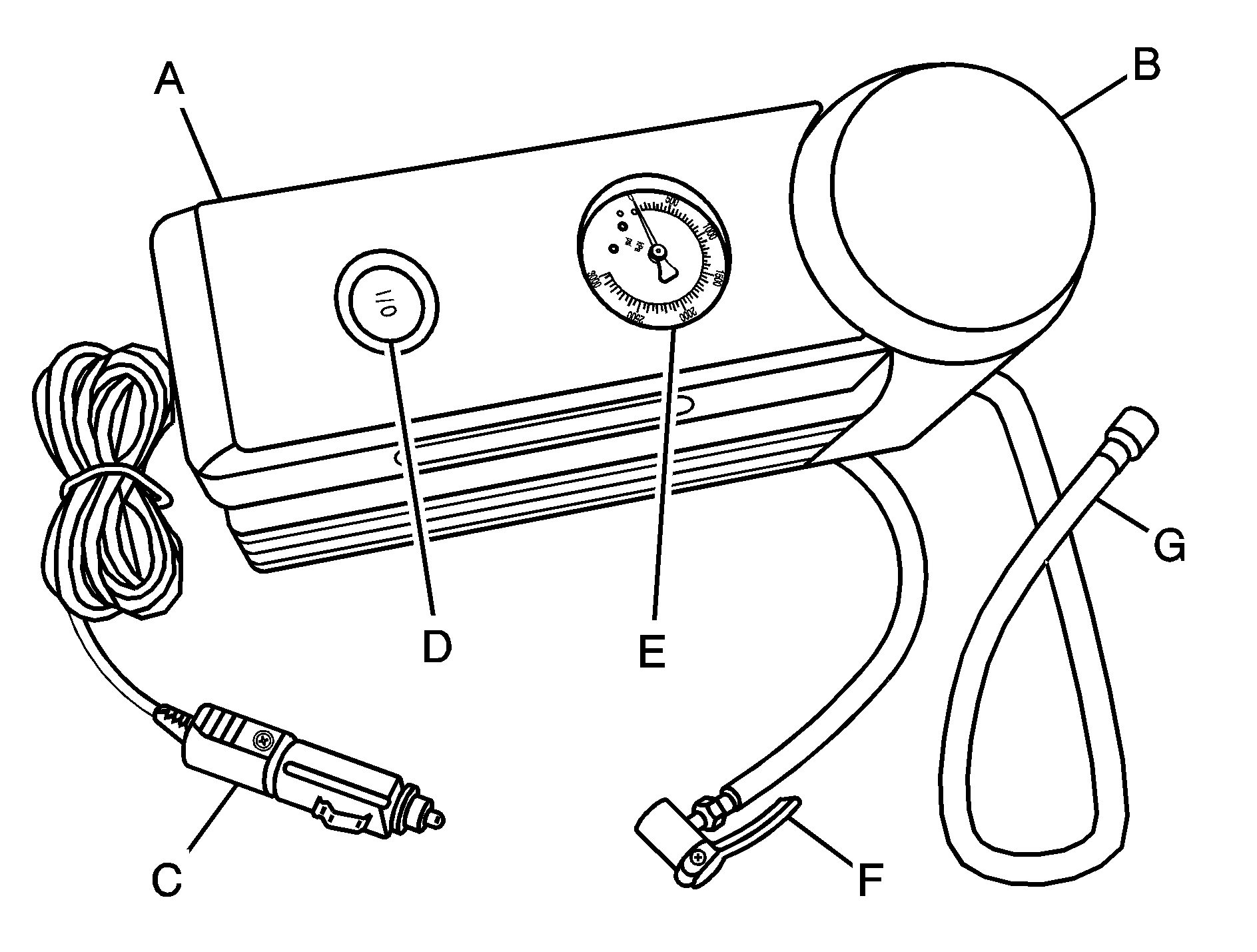
Air Compressor
Tire Sealant Canister
Air Compressor Accessory Plug
On/Off Switch
Air Pressure Gage
Air Only Hose
Sealant/Air Hose
Accessing the Tire Sealant and Compressor Kit
To access the tire sealant and compressor kit, do the following:
- Make sure the convertible top is in the up position before accessing the tire sealant and compressor kit.
- Open the trunk. See Trunk for more information.
- Locate the tire sealant and compressor kit on the driver side of the vehicle, near the back corner of the trunk.
- Remove the tire sealant and compressor kit strap by squeezing the two tabs of the quick release buckle.
- Remove the sealant and compressor kit from its foam container.
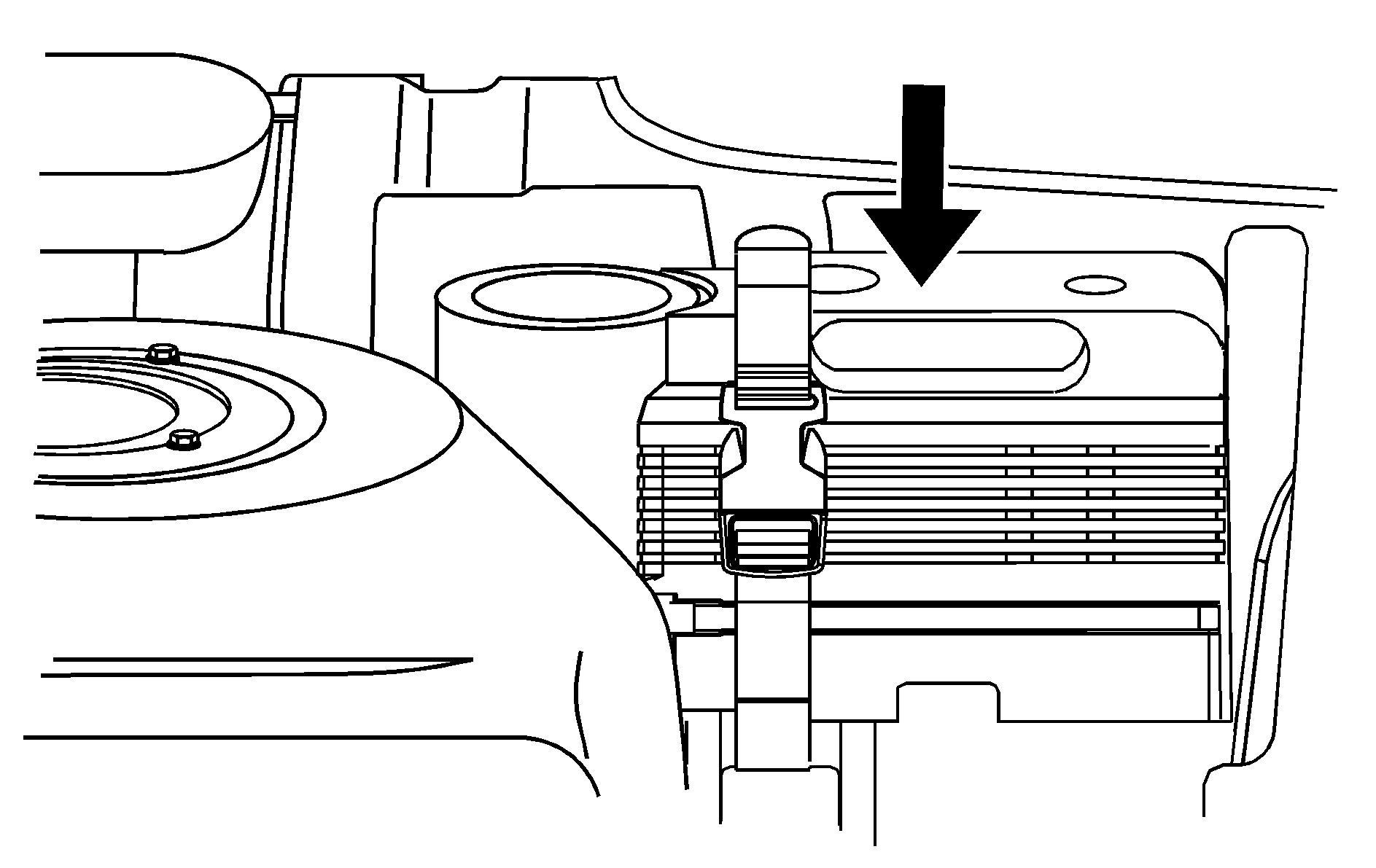
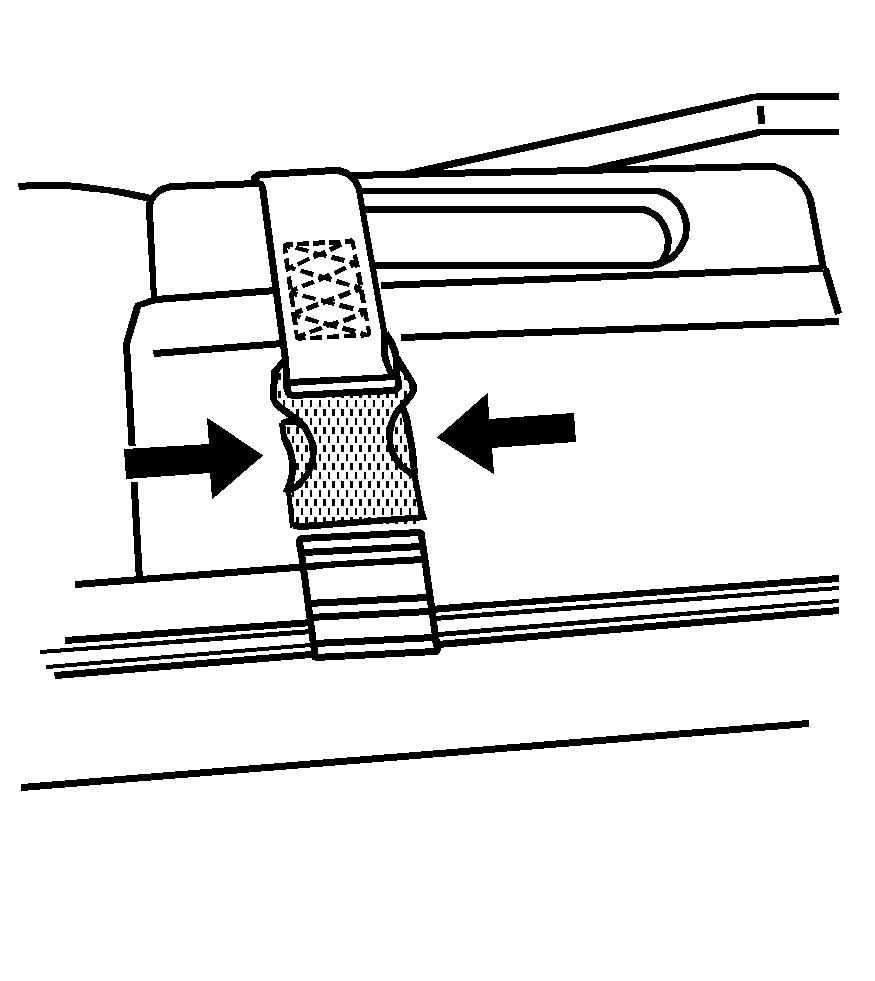
Tire Sealant
When using the tire sealant and compressor kit during cold temperatures, warm the kit in a heated environment, such as the vehicle, for five minutes. This will help to inflate your tire faster.
Read and follow the safe handling instructions on the instructional label adhered to the sealant canister.
Check the tire sealant expiration date on the sealant canister. the sealant canister should be replaced before its expiration date. Replacement sealant canisters are available at your local dealer/retailer. See "Removal and Installation of Sealant Canister" later in this section.
The sealant can temporarily seal a puncture of up to 6 mm in the tread area of the tire. The sealant cannot seal sidewall damage, large punctures, or a tire that has unseated from the wheel. See Roadside Assistance Program .
The sealant can only be used to seal one tire. After usage, the tire sealant canister and sealant/air hose assembly must be replaced at a dealer/retailer. See "Removal and Installation of Sealant Canister" later in this section.
Using the Tire Sealant and Compressor Kit to Temporarily Seal and Inflate a Punctured Tire
Follow these directions closely for correct sealant usage.
- Do a safety check before proceeding. See If a Tire Goes Flat .
- Inspect the damaged tire.
- Place the tire sealant and compressor kit on the ground and unwrap the sealant/air hose (G) from the side of the compressor.
- Remove the valve stem cap from the flat tire by turning it counterclockwise.
- Attach the sealant/air hose (G) onto the tire valve stem. Turn it clockwise until tight.
- Remove the air compressor accessory plug (C) from the unit.
- Plug the air compressor accessory plug (C) into the accessory plug outlet in the vehicle. See Accessory Power Outlet(s)
- Start the vehicle. See Starting the Engine for more information. The vehicle must be running while using the air compressor.
- Push the On/Off switch (D) to the I (on) position.
- Inflate the tire to the recommended inflation pressure using the air pressure gage (E) on the top of the unit. The recommended inflation pressure can be found on the Tire and Loading Information label. See Inflation - Tire Pressure .
- Turn the compressor off by pushing the On/Off switch (D) to the I (off) position.
- Unplug the air compressor accessory plug from the accessory power outlet in the vehicle.
- Disconnect the sealant/air hose from the tire valve stem, by turning it counterclockwise, and replace the tire valve stem cap.
- Wrap the sealant/air hose (G) around the air compressor channel to stow it in its original location.
- Stow the air compressor accessory plug back (C) in the air compressor. To do this, wrap the air compressor accessory plug, snap in the plug, and then push in the bottom and then the top of the wrapped air compressor accessory plug.
- Place it in a highly visible location such as the inside of the upper left corner of the windshield or to the face of the radio/clock.
- Return the equipment to its original storage location in your vehicle.
- Immediately drive the vehicle 5 miles (8 km) to distribute the sealant evenly in the tire.
- Stop at a safe location and check the tire pressure, refer to Steps 1 through 11 under "Using the Tire Sealant and Compressor Kit without Sealant to Inflate and Underinflated Tire (Not Punctured" later in this section. If the tire pressure has fallen more then 10 psi (68 kPa), below the recommended inflation pressure, stop driving the vehicle. The tire is too severely damaged and the tire sealant and compressor cannot seal the tire. See Roadside Assistance Program for more information.
- Wipe off any sealant from the wheel, tire, and vehicle.
- Dispose of the sealant canister (B) and sealant/air hose (G) assembly at a local dealer/retailer or in accordance with your local state codes and practices.
- After temporarily sealing a tire with the tire sealant and compressor kit, take your vehicle to your dealer/retailer to have the tire repaired or replaced.
The sealant cannot seal sidewall damage, large punctures, or a tire that has unseated from the wheel. See Roadside Assistance Program
Do not remove any objects that have penetrated the tire.
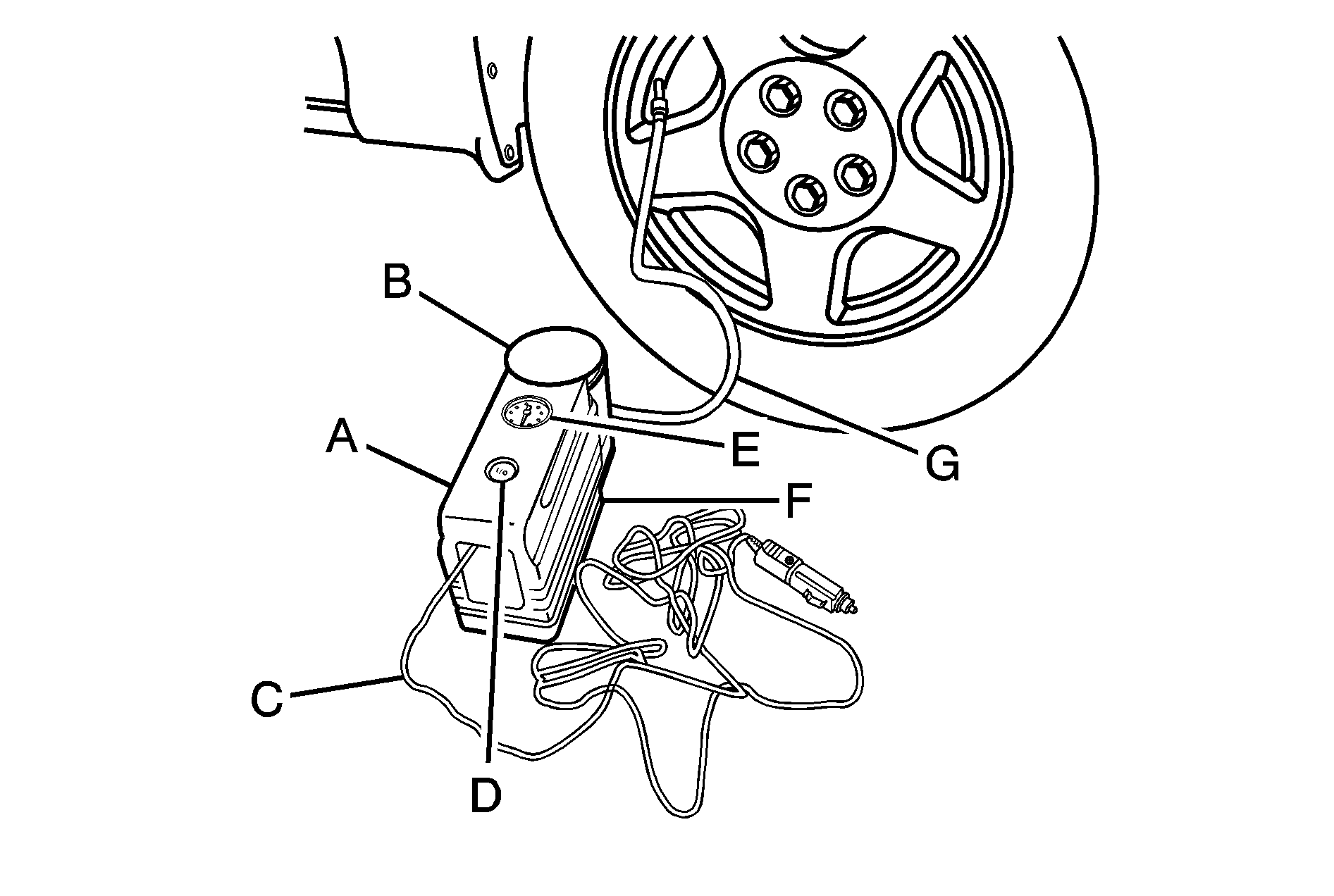
Make sure the sealant and compressor kit On/Off switch (D) is in the O (off) position.
Do not slam the door or close the window on the compressor accessory plug cord.
Caution: Idling the engine in a closed-in place or with the climate control system off can cause deadly carbon monoxide (CO). See Engine Exhaust .
Caution: Overinflation could cause the tire to rupture, and you or others could be injured. Be sure to read the inflator instructions, and inflate the tire to its recommended pressure. Do not exceed 36 psi (248 kPa).
The sealant and compressor kit injects sealant and air into the tire.
The pressure gage will initially show a high pressure while the compressor pushes the sealant into the tire. Once the sealant is completely dispersed in the tire, the pressure will quickly drop and start to rise again as the tire inflates.
the pressure gage reading is slightly high while the compressor is on. Turn the compressor off to get an accurate pressure reading. the compressor may be turned on and off until the correct pressure is reached.
Notice: If the recommended pressure cannot be reached after approximately 25 minutes, the vehicle should not be driven. The tire is too severely damaged and the tire sealant and compressor kit cannot inflate the tire. Remove the air compressor accessory plug from the accessory power outlet and unscrew the sealant/air hose from the tire valve or tire pressure monitoring sensor valve. See Roadside Assistance Program .
Steps 12 through 20 must be done right after Step 11.
The tire is not sealed and will continue to leak air until the vehicle is driven and the sealant is distributed in the tire.
Be careful when handling the tire inflator components as they could be hot after usage.
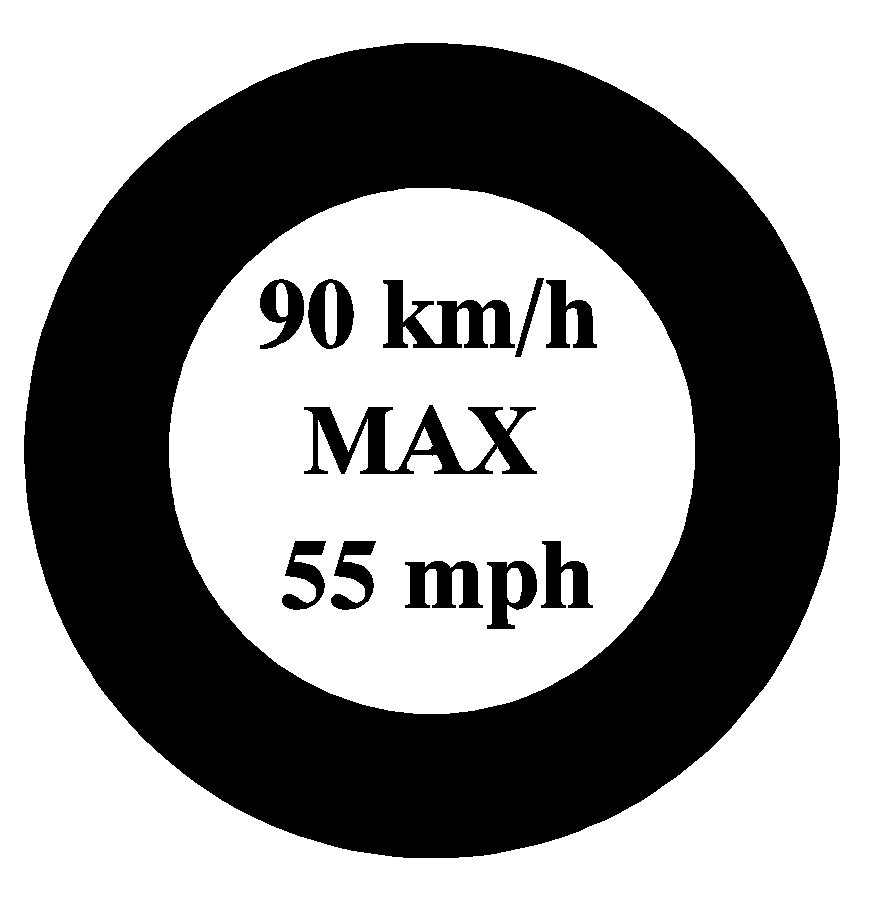
If the flat tire was able to be inflated to the recommended inflation pressure, remove the maximum speed label from the sealant canister (B).
The maximum speed label reminds you to drive cautiously and not to exceed 55 mph (90 km/h) until you have the damaged tire inspected and repaired.
Caution: Storing the tire sealant and compressor kit or other equipment in the passenger compartment of the vehicle could cause injury. In a sudden stop or collision, loose equipment could strike someone. Store the tire sealant and compressor kit in its original location.
If the tire pressure has not dropped more than 10 psi (68 kPa) from the recommended inflation pressure, inflate the tire back up to the recommended inflation pressure.
Using the Air Compressor without Sealant to Inflate an Underinflated Tire (Not Punctured)
To use the air compressor to inflate a tire with air only and not sealant, do the following:
- Unlock the air only hose (F) from the sealant canister (B) by pulling up on the lever.
- Pull the air only hose (F) from the sealant canister (B).
- Remove the tire valve stem cap by turning it counterclockwise.
- Push the air only hose (F) onto the tire valve stem and push the lever down to secure in place.
- Remove the air compressor accessory plug (C) from the unit.
- Plug the air compressor accessory plug (C) into an accessory power outlet in the vehicle. See Accessory Power Outlet(s) .
- Start the vehicle. See Starting the Engine for more information. The vehicle must be running while using the air compressor.
- Push the On/Off switch (D) to the I (on) position.
- Inflate the tire to the recommended inflation pressure by using the air pressure gage (E) on the top of the unit. See Inflation - Tire Pressure .
- Turn off the air compressor by pushing the On/Off switch (D) to the O (off) position.
- Unplug the air compressor accessory plug (C) from the accessory power outlet in the vehicle.
- Unlock the air only hose (F) from the tire valve stem by pulling the lever up.
- Disconnect the air only hose (F) from the tire valve stem and replace the tire valve stem cap.
- Wrap the air only hose (F) around the side of the air compressor channel to stow it back into its original location.
- Stow the air compressor accessory plug back (C) in the air compressor. To do this, wrap the air compressor accessory plug, snap in the plug, and then push in the bottom and then the top of the wrapped air compressor accessory plug.
- Return the equipment to its original storage location of your vehicle.
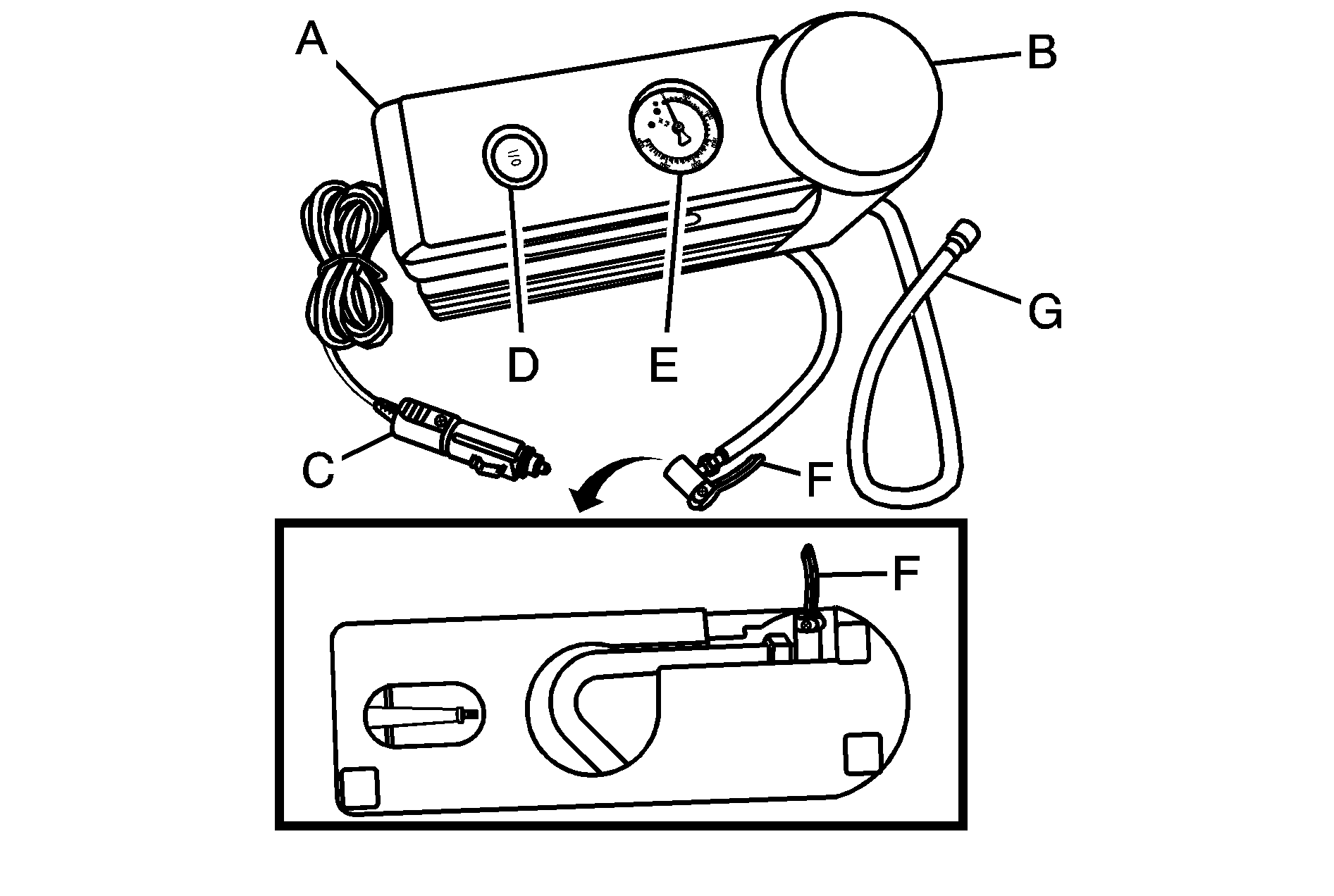
Do not slam the door or close the window on the compressor accessory plug.
Caution: Idling the engine in a closed-in place or with the climate control system off can cause deadly carbon monoxide (CO). See Engine Exhaust .
Caution: Overinflation could cause the tire to rupture, and you or others could be injured. Be sure to read the inflator instructions, and inflate the tire to its recommended pressure. Do not exceed 36 psi (248 kPa).
The tire sealant and compressor switch will inflate the tire with air only.
The pressure gage reading is slightly high while the compressor is on. Turn the compressor off to get an accurate pressure reading. The compressor may be turned on and off until the correct reading is reached.
Be careful while handling the tire sealant and compressor kit as they could be hot after usage.
Caution: Storing the tire sealant and compressor kit or other equipment in the passenger compartment of the vehicle could cause injury. In a sudden stop or collision, loose equipment could strike someone. Store the tire sealant and compressor kit in its original location.
Removal and Installation of the Sealant Canister
To remove the sealant canister, do the following:
- Unlock the air only hose from the sealant canister by pulling the lever up.
- Pull the air only hose from the sealant canister.
- Unwrap the sealant/air hose from the compressor.
- Turn the sealant canister so the inflator filling hose is aligned with the slot in the compressor.
- Lift the sealant canister from the compressor and replace with a new sealant canister. See your dealer/retailer for more information.
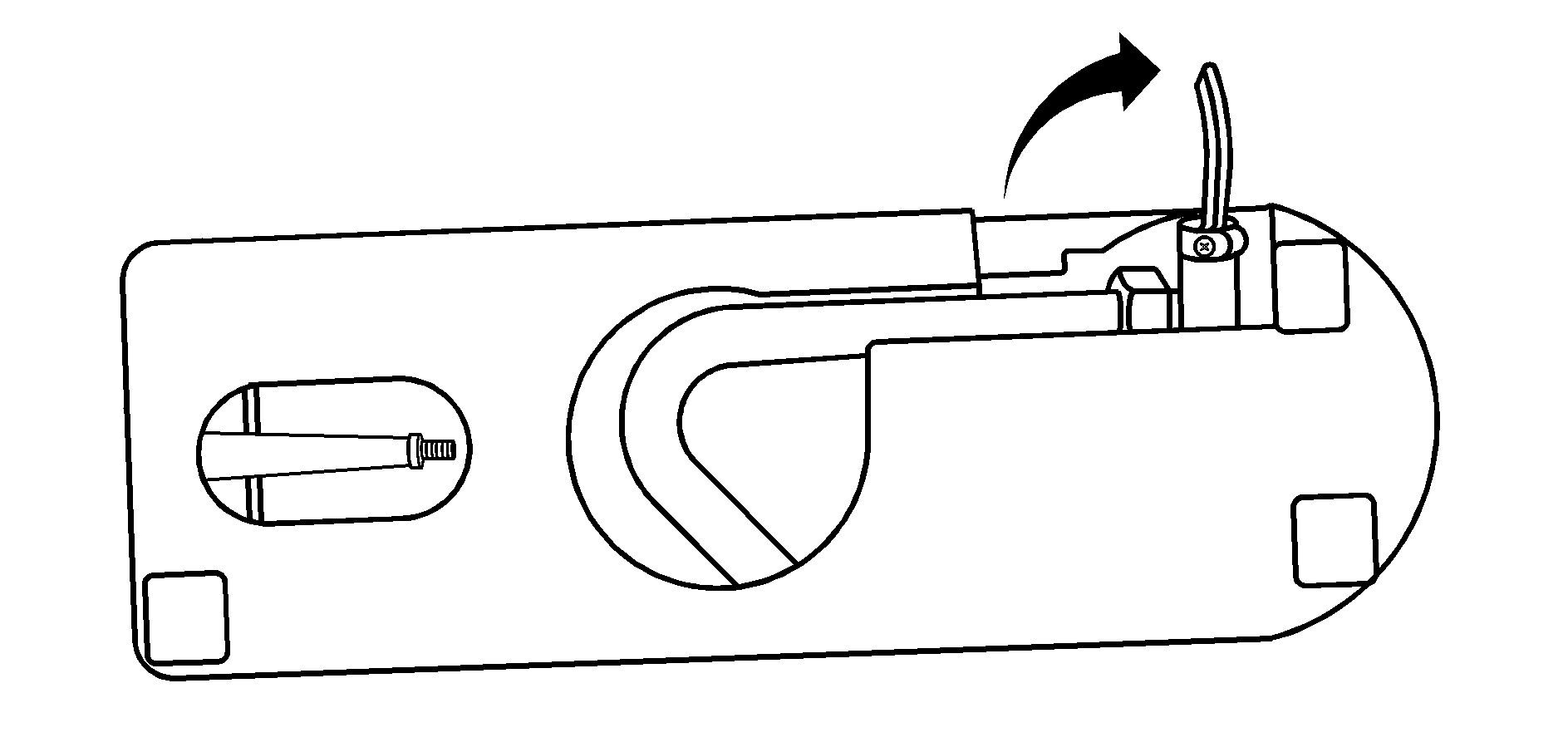
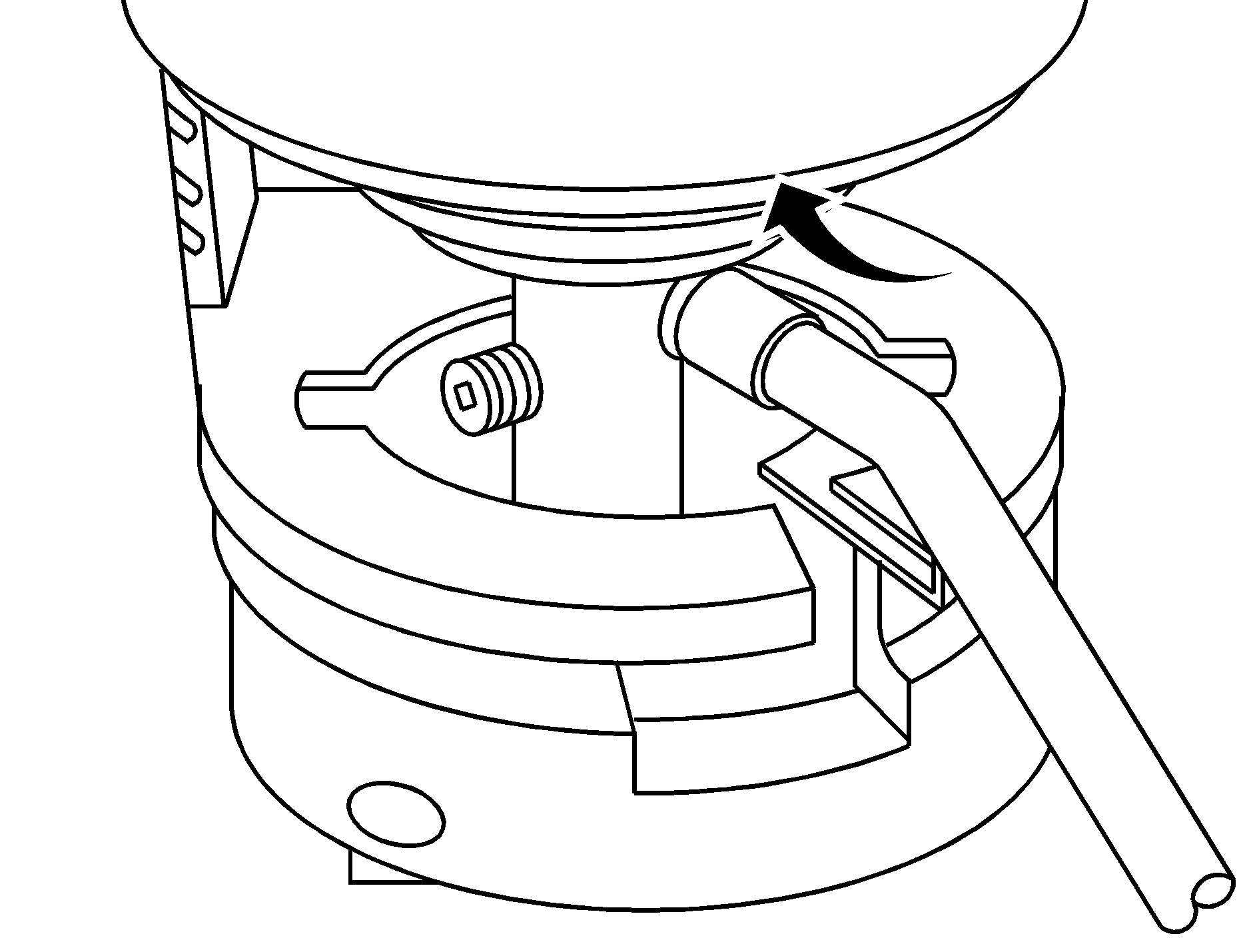
To install a new sealant canister, do the following:
- Align the sealant/air hose with the slot in the air compressor.
- Push the sealant canister down and turn it clockwise.
- Wrap the sealant/air hose around the air compressor channel to stow it in its original location.
- Push the air only hose onto the sealant canister inlet and push the lever down.
